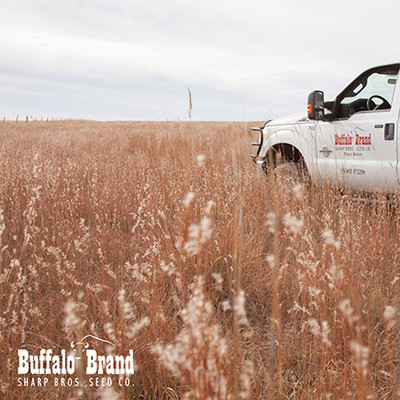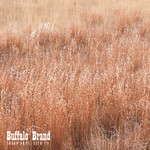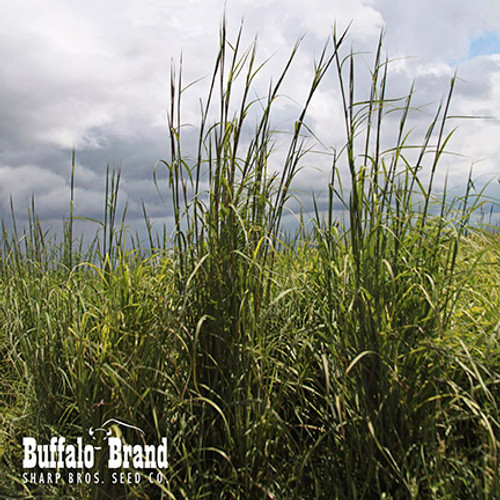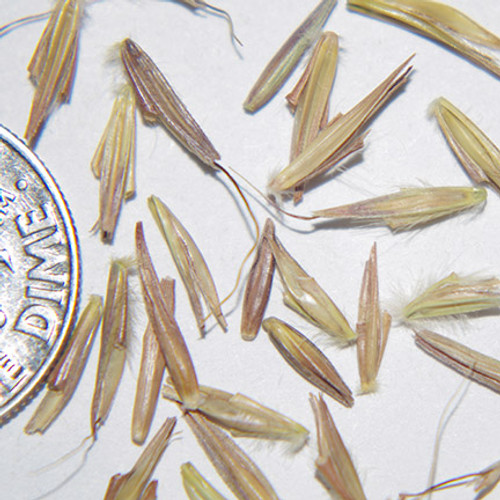Sold by the PLS pound
Botanical Name: Schizachyrium Scoparium
Cultivars: Aldous, Blaze, Camper, Cimarron, Native
Height: 24-36 Inches
Spread: 12-15 Inches
USDA Hardiness Zone 5 - 9
Little Bluestem is a valuable summer forage grass in drier areas because of its efficient use of whatever moisture is available. Once established, Little Bluestem requires very little maintenance. Whenever grazing is properly managed, plantings of native Little Bluestem adapt well and form high quality pastures.
Little Bluestem is a very common native grass, found in almost all states of the United States. A smaller grass than Big Bluestem, it is slightly less palatable, but more drought resistant. A bunch-forming grass, Little Bluestem has a dense root system which enables it to grow on even the poorest and roughest ground. The stem and growth from previous years remain standing where it weathers to create a mulch. Growing best on medium or dry soils, new shoots are identifiable in early April and maturity is reached by late August to October. Little Bluestem is highly desirable for grazing and haying.
- Clump-forming native grass
- Tolerant of variety of sites, heat and humidity
- Food and cover for wildlife
- Little Bluestem is often mixed with other native grasses for seeding critical areas such as road embankments where re-establishment of vegetation is important.
- Little Bluestem is an attractive grass, with rich green summer foliage turning to a rusty brown in the fall.
Varieties:
Aldous was first developed as a forage crop. It is now considered superior to native Little Bluestem. Using selections from plantings in Eastern Kansas, Aldous Little Bluestem was shown to grow considerably taller, providing excellent wildlife habitat as well as highly palatable forage.
Blaze was developed initially as an ornamental grass. Turning a brilliant red in the fall after the first frost, Blaze Little Bluestem catches the eye of many who are interested in colorful landscaping. Blaze retains the good qualities of Little Bluestem: good forage and well adapted to most locations. Several states are now using Blaze Little Bluestem for roadway seeding after new construction is complete.
Camper is a long-lived perennial grass, producing maximum vegetative growth in midsummer. It is recommended primarily in mixture with other warm-season prairie grasses for range, non-irrigated pastures, and roadside plantings.
Cimarron was developed after the combining of several strains of native Little Bluestems from Southwest Kansas. Well suited for drier climates and lighter soils, Cimarron is planted in southern Kansas, across Oklahoma and into Texas with strong, highly productive stands resulting.
Native Little Bluestem is a valuable summer forage grass in drier areas because of its efficient use of whatever moisture is available. Once established, Little Bluestem requires very little maintenance. Whenever grazing is properly managed, plantings of native Little Bluestem adapt well and form high quality pastures.
Growing & Maintenance Tips
At Sharp Bros. Seed Co. we have worked with a variety of customers over many years who have successfully seeded and established native grass species. These species demonstrate amazing tenacity once they are established. Natives are tolerant to extremes of heat or cold, drought and a variety of other harsh environmental conditions. Seed and seedling characteristics of natives are different from those of most domesticated crops or turf grasses.
Native species generally have small seeds that normally exhibit less seedling vigor than most domesticated plant species. Natives generally require shallow seeding depths and germination can be somewhat prolonged due to naturally occurring seed dormancy. Successful establishment requires attention to detail in seedbed preparation, seeding and early management. Please view out Establishing Native Grasses-Technical Guide, below for more information!
Interesting Notes
There is an apparent correlation between the intensity of a plant's summer blue-green color and its fall red-orange color.










